Barcode label printers deliver sharp, scannable codes that stand up to real-world use in labs, warehouses, and production. These thermal transfer printers range from compact desktop models to rugged industrial systems built for high-volume throughput. Each is engineered for accuracy, ensuring barcodes remain clear and consistent across diverse label materials and applications. From tubes and slides to cartons and pallets, they provide reliable identification that lasts.
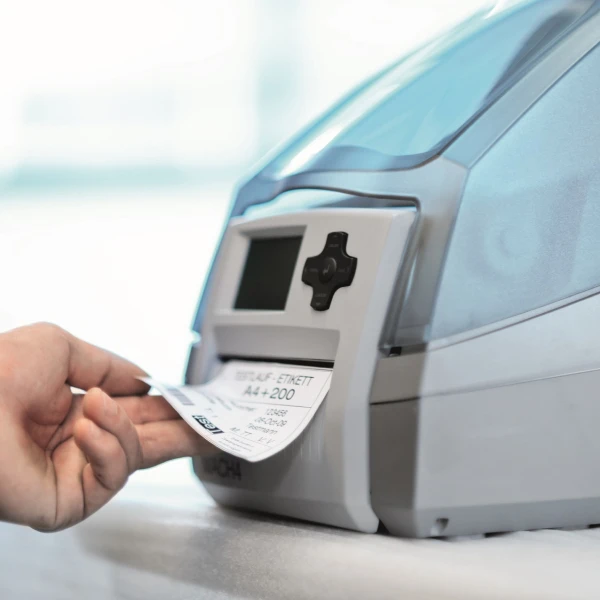
Barcode label printers must do more than transfer ink to a label — they must produce codes that scan accurately every time. Reliable barcode imaging depends on sharp resolution, balanced speed, and materials that deliver strong contrast. A printer that performs well in general labeling may still fail if it can’t maintain barcode readability under real-world conditions.
Small bar widths and dense 2D codes require higher dpi. Without enough resolution, bars blur together and scanners fail to capture data accurately.
Barcodes depend on sharp light-to-dark contrast. The wrong ribbon or label material can create reflection or low opacity, making codes unscannable.
Quiet zones, edge sharpness, and sensor alignment ensure codes are positioned where scanners expect them. Even slight misplacement can result in failed reads.
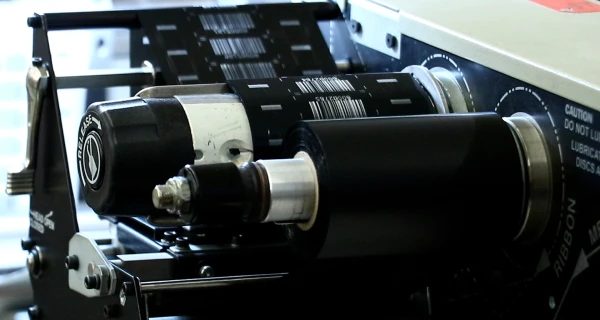
Resolution controls dot density and line clarity. 203 dpi is common for shipping labels and larger codes; 300 dpi sharpens small text and tighter bar widths; 600 dpi is best for micro-labels or dense Data Matrix/QR. On many printers, higher dpi runs at lower top speeds (e.g., cab MACH 4S offers up to 300 mm/s at 203/300 dpi and 150 mm/s at 600 dpi). Choose the lowest dpi that still scans 100% to keep throughput high.
Listed in mm/s (1 ips = 25.4 mm/s), speed dictates how fast you clear queues—especially in batch or line-side printing. Top speeds vary by dpi and model: a Zebra ZT411 reaches 356 mm/s (14 ips) at 203 dpi; 300 dpi versions run slower by design. Like resolution, higher speed can distort fine bars if not balanced with media and ribbon choice. For consistent barcode quality, confirm performance at the dpi and label size you plan to use.
Desktop units target intermittent work; industrial units use heavier frames, motors, and ribbons for continuous shifts. TSC’s MB Series is explicitly positioned as industrial and supports long runs (and very long printable lengths), while small desktop lines (e.g., Zebra ZD) are optimized for lower volumes with easy media swaps. Match the class to your daily labels and environment to minimize downtime and wear.
Maximum Label Width
Defines the widest label a printer can accommodate, with common ranges from 2 inches (desktop printers) to 6 inches or more (industrial models). Wider capacity allows for compliance labels, shipping labels, and custom formats. “4-inch class” printers typically support ~104–108 mm print widths (e.g., Zebra ZT411 104 mm; cab MACH 4S 105.7–108.4 mm; TSC MB 105.7–107 mm). Six- and eight-inch classes exist for wider compliance or pallet labels.
Maximum Label Length
Determines the longest label the printer can produce, important for banner-style labels or multi-part regulatory labeling. Firmware/memory and dpi constrain length. TSC’s MB series lists up to 1,000″ (25,400 mm) at 203 dpi and 450″ (11,430 mm) at 300 dpi—illustrating how higher dpi shortens max length. For long chemical/GHS strips or banner tags, verify at the dpi you’ll run.
Supported Media Types
Common formats include continuous, die-cut, fan-fold, and black-mark (pre-printed marks on the liner). Continuous is flexible for variable sizing; die-cut enforces exact repeatability; fan-fold suits high-volume stacks and offline rewinders.
Media Sensing Options
Printers use transmissive (gap/notch) and reflective (black-mark) sensors to find top-of-form. Many mid-range/industrial units offer adjustable sensors or dual sensing for compatibility across varied label sets—reducing calibration time and misfeeds.
Media Roll Capacity
Industrial frames typically accept 8.0″ OD rolls on 3″ cores (fewer swaps, better uptime). Desktop units often use 5″ OD and smaller cores. Example: ZT411 supports 8.0″ OD with 3″ cores. Pair roll capacity with ribbon length to balance changeovers.
Ribbon Length/Capacity
Desktop printers commonly load 74–110 m ribbons; some (e.g., Zebra ZD421) also accept 300 m high-capacity rolls. Industrial models commonly use 300 m, 450 m, and 600 m (≈1,968 ft) ribbons to minimize stoppages; cab and Zebra have broad 600 m support.
Ribbon Orientation (CSI vs. CSO)
CSO (coated-side-out) and CSI (coated-side-in) refer to which side of the ribbon carries the ink. Zebra and TSC typically use CSO in their industrial lines; Datamax/SATO frequently use CSI. Loading the wrong wind prevents proper transfer and can damage the head. (A quick test: touch a label to the ribbon’s outside—ink transfer = CSO.)
Supported Ribbon Widths
Match ribbon width to printhead width for even coverage and head protection. For 4-inch class printers, 110 mm (4.33″) is a common width; verify needed core (1″) and wind (CSO/CSI) per model.
Ink Formulations (Wax/Wax-Resin/Resin)
Connectivity Options
Look for USB (direct), Ethernet (IT-managed), and optional Wi-Fi/Bluetooth for mobile carts or bench setups.
Software Compatibility
Compatibility with label design software like BarTender and Loftware ensures efficient workflow integration. Drivers and APIs expand options for enterprise systems.
Language Emulation Support
Many printers emulate languages like ZPL, EPL, or PostScript, allowing easy drop-in replacement for legacy systems.
User Interfaces
Interfaces range from simple button-and-light panels to full-color touchscreens. More advanced interfaces streamline setup, diagnostics, and user training.
Size, Weight, and Enclosure
Desktop enclosures (compact plastics) save bench space in labs; industrial frames (metal chassis, larger media bays) stabilize high-speed, high-duty printing and accept bigger rolls/ribbons. cab MACH 4S, for instance, is a compact “midrange” design that still supports industrial-class speeds and 600 dpi options.
Operating Conditions
Manufacturer ratings define temperature/humidity windows for consistent imaging and adhesives. Industrial lines typically tolerate broader ranges; always pair printer ratings with label/ribbon specs for your environment (freezers, warm warehouses, solvents).
Cutters
Automatically cut labels after printing, ideal for individual tags or specialty applications.
Peelers
Remove label liners for faster manual application and reduce operator fatigue.
Rewinders
Collect labels into rolls after printing, useful for batch jobs or integration with applicators.
Applicators
Automate label placement directly onto products, improving speed and consistency in production lines.
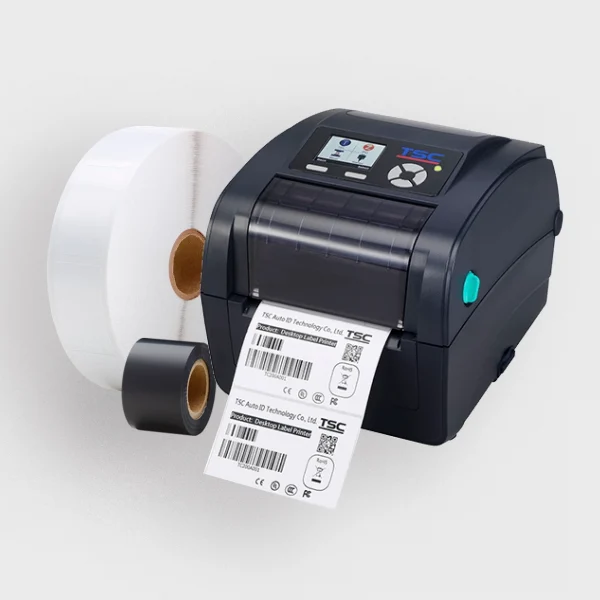
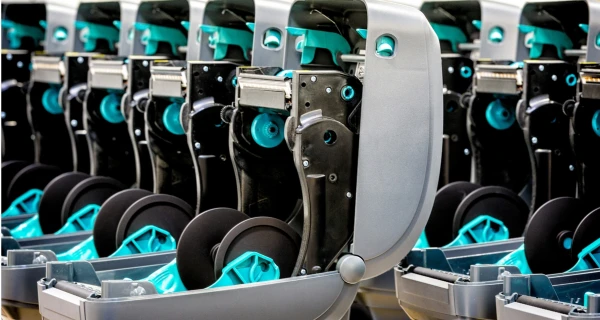
Every printer featured on this page uses thermal transfer technology, a proven method for producing durable, high-quality barcodes. Instead of liquid ink or toner, thermal transfer printers use a heated printhead to melt a ribbon coating of wax, wax/resin, or resin onto the label surface. This process creates a crisp, permanent image that adheres securely to the label material. With the right ribbon and label pairing, thermal transfer prints resist abrasion, chemicals, solvents, moisture, and extreme temperatures, making them ideal for demanding environments like labs and manufacturing floors.
The technology also supports a wide range of face stocks and coatings, ensuring barcodes remain sharp, scannable, and stable over time. By selecting different ribbon formulations, durability can be fine-tuned without changing printers, keeping results consistent across applications.
Not sure which printer fits your workflow? Answer a few quick questions and our team will follow up with expert recommendations tailored to your needs.
Desktop barcode printers are compact and versatile, making them ideal for labs, healthcare facilities, offices, and small production areas. They provide reliable print quality for moderate volumes without taking up much space, and they’re easy to set up and maintain. While smaller than industrial units, modern desktop printers support multiple resolutions, media types, and connectivity options to ensure consistent, scannable barcodes.
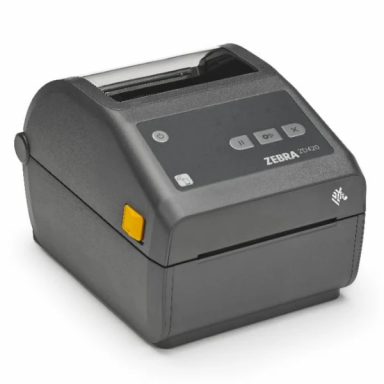
Zebra’s ZD Series combines ease of use with dependable performance, offering models tailored to different needs. The ZD421 provides reliable desktop printing with a compact footprint, while the ZD621 adds faster processing, expanded connectivity, and a full-color display for more demanding workflows.
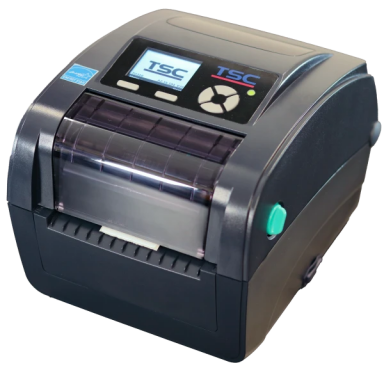
The TC Series from TSC balances durability with everyday usability. Built with a double-wall construction, these printers are sturdier than most in their class, making them suitable for busy environments where reliability is essential. Compact and efficient, they are a popular choice for small to medium-scale labeling tasks.
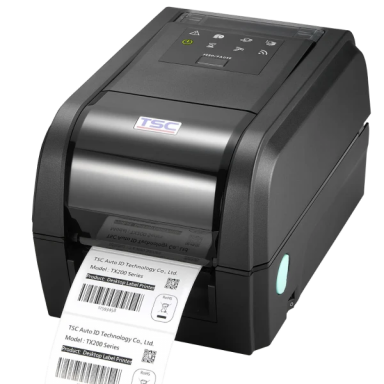
The TX Series offers higher speed and flexibility than entry-level desktop printers. With multiple dpi options and faster throughput, the TX is designed for applications that require both precision and efficiency. Its larger ribbon capacity and advanced connectivity make it a good step up for users who need more than basic desktop performance.
Industrial barcode printers are designed for continuous, high-volume use in warehouses, production lines, and distribution centers. They feature rugged metal frames, larger media capacities, and powerful print engines that maintain quality under heavy workloads. These printers are the backbone of demanding labeling operations, where uptime and durability are just as important as speed and precision.
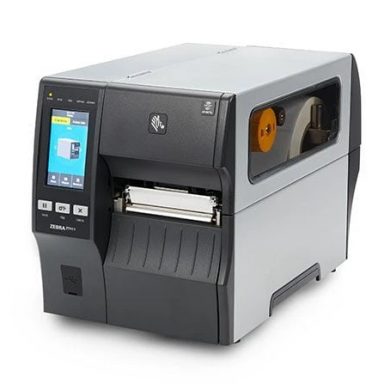
The ZT400 Series delivers a balance of performance, reliability, and flexibility for industrial environments. The ZT411 supports labels up to 4 inches wide, while the ZT421 extends that capacity to 6 inches, both offering fast print speeds and multiple connectivity options. These models are widely adopted for logistics, manufacturing, and healthcare applications.
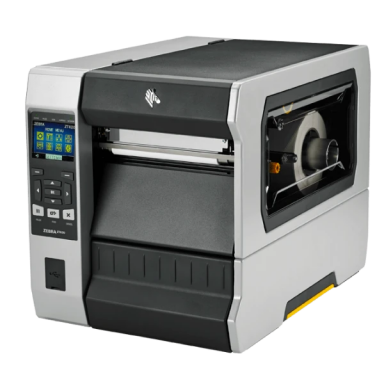
The ZT610 is part of Zebra’s premium ZT600 line, designed for mission-critical operations. With ultra-rugged construction and advanced electronics, it offers precise imaging at higher resolutions, making it suitable for tiny barcodes and compliance labeling. It excels in environments that require 24/7 performance with minimal downtime.
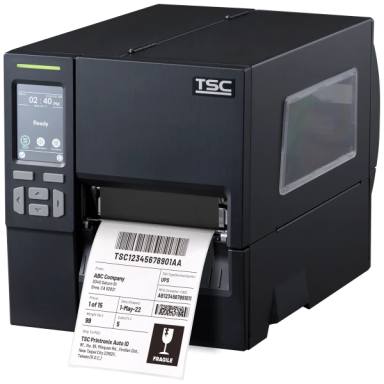
The MB Series is TSC’s compact industrial line, providing robust performance in a smaller footprint. It supports long ribbon lengths, fast throughput, and simple integration, making it a cost-effective choice for manufacturers and logistics providers. Its blend of industrial features and affordability makes it one of TSC’s most popular industrial models.
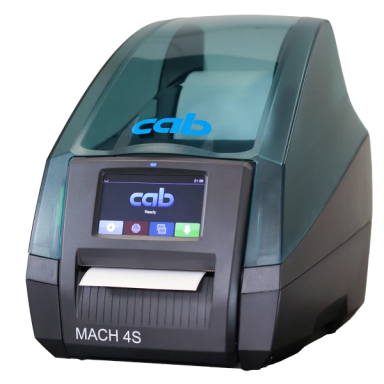
The MACH 4S combines compact design with industrial-grade reliability. With a full-color touchscreen, metal housing, and multiple print resolutions, it is ideal for production environments that need flexibility in a smaller format. It bridges the gap between desktop convenience and industrial durability.
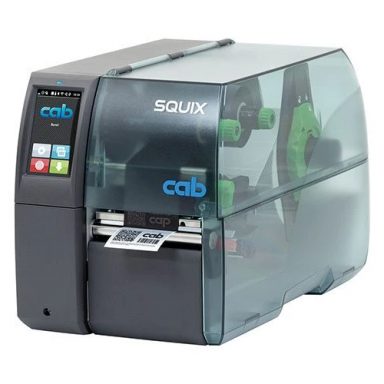
The SQUIX is cab’s flagship industrial printer line, known for precision, speed, and adaptability. Available in multiple widths and dpi options, it handles everything from small lab labels to wide industrial tags. With advanced connectivity and automation readiness, the SQUIX is built to integrate seamlessly into demanding workflows.
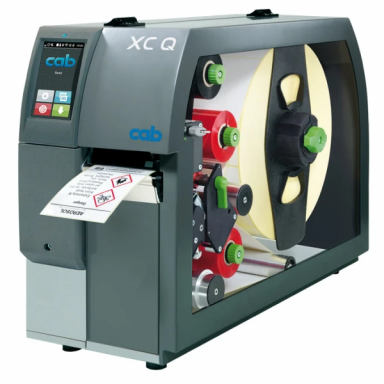
The XC Q is a two-color thermal transfer printer engineered for applications such as GHS chemical labeling. It prints with two ribbons in a single pass, combining durability with clear hazard communication. This capability makes it an efficient solution for industries that require compliance-ready, full-label output directly from one device.
Printer performance depends as much on label and ribbon compatibility as it does on technical specs. Many “printer problems” actually stem from mismatched supplies rather than the printer itself. Ensuring the right materials are paired with the right printer is critical for reliable imaging, smooth media handling, and long-term equipment health.
Printers are built for specific media widths, roll diameters, and core sizes. Incompatible label stock leads to feeding errors, skewed printing, or premature jams.
A mismatch between adhesive tack, liner strength, and printer mechanics can cause labels to peel incorrectly, stick inside the printer, or fail to release smoothly.
Some face stocks require higher heat or pressure to image properly. Using the wrong label material results in faint barcodes, smudging, or poor scannability.
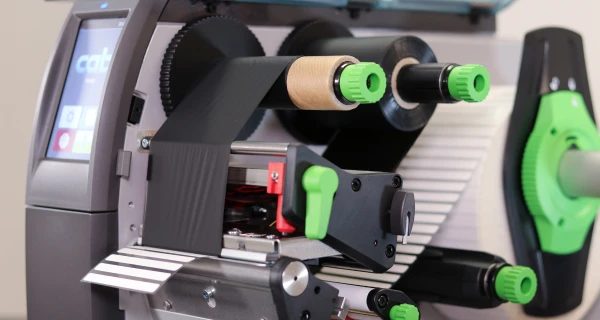
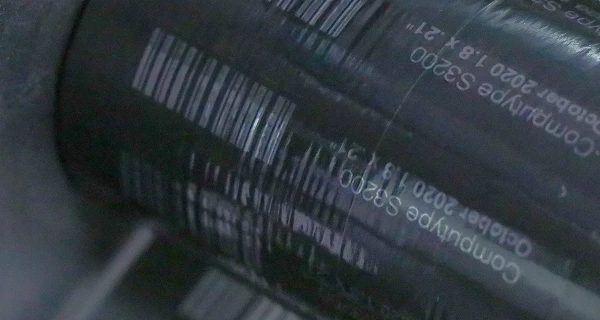
Desktop printers typically support shorter ribbons (74–110 m), while industrial models handle up to 600 m. Installing oversized rolls causes loading issues and damage.
Printers are engineered for either coated-side-in (CSI) or coated-side-out (CSO) ribbons. Loading the wrong orientation prevents imaging and risks harming the printhead.
Printers vary in heat and pressure capabilities. Wax, wax/resin, or resin ribbons must be matched to the printer’s imaging power to avoid poor adhesion or print voids.
Thermal transfer printers are built for durability, but they are still precision instruments that benefit from regular care. Understanding how the core components work not only helps you keep barcodes sharp and scannable, it also prevents common issues that can shorten a printer’s lifespan. Many service calls that appear to be mechanical failures are actually the result of neglected cleaning or incompatible supplies. With the right maintenance routine, these printers can run for years in demanding environments like labs and production floors without major interruptions.
The printhead is the most critical and delicate component. It applies heat to the ribbon, creating the barcode image. Dust, debris, or residue can cause streaks, poor contrast, or permanent damage.
The platen roller feeds labels and ribbons through the printer. Over time, adhesives, dust, and wear can cause slippage or uneven pressure, affecting barcode clarity and feeding accuracy.
Printers rely on sensors to detect gaps, marks, or notches in the label stock. A dirty or misaligned sensor can lead to misfeeds, skipped labels, or print misalignment.
Inspect rollers for grooves or adhesive buildup. Replacing them promptly ensures even pressure across the media and consistent barcode printing.
Dust or adhesive residue on sensors can cause media errors. Cleaning and recalibrating keeps printers detecting labels correctly and prevents wasted stock.
The right label and ribbon combinations not only improve print quality but also minimize abrasion and residue on the printhead and rollers.


Have questions? We’re here to help.
Contact us to connect with a specialist who understands your industry and can provide the right solutions for your business. Let’s start a conversation.
Take advantage of our volume discounts for bulk orders. Reach out to us for a personalized quote tailored to your needs.
"*" indicates required fields